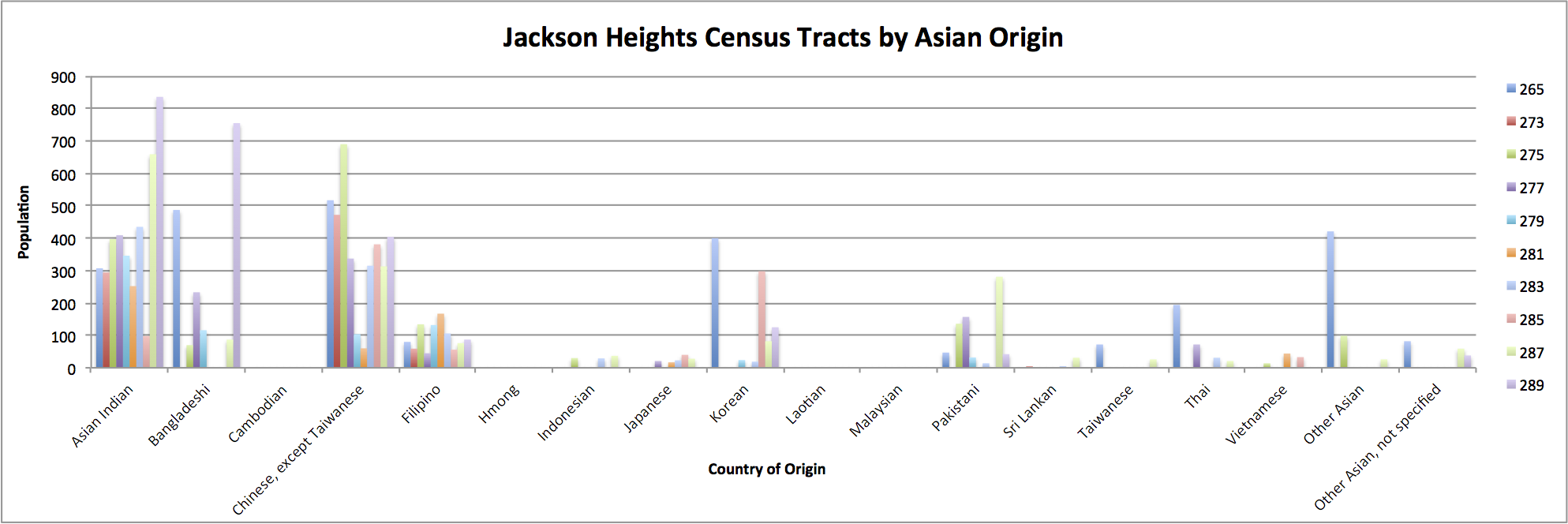Census Data Along Roosevelt Avenue in Jackson Heights
Since our focus is on Roosevelt Avenue, a study of observable patterns in the census tracts along Roosevelt Avenue (and within Jackson Heights) tells us about the racial composition of the population. Moreover, these census tracts also give us a breakdown of the median income level by race, the percentage of the population under the poverty line and the specific ethnicities that are represented along Roosevelt Avenue. Let’s look at some of these patterns and their significance:

This data is based on the American Community Survey 5 year estimates via socialexplorer.com (Years 2007 to 2011)
Along Roosevelt Avenue, there is a relatively high population of Hispanics and Asians. This information is arranged according to the various census tracts along Roosevelt Avenue. As we have seen and discussed in class before, highly concentrated areas such as “Little India” and “Little Colombia” contribute to the racial diversity of Jackson Heights.

This data is based on the American Community Survey 5 year estimates via socialexplorer.com (Years 2007 to 2011)
We are already aware that Jackson Heights is a hyper-diverse community. This graph provides further evidence that within the “Hispanic” race, there is extreme ethnic diversity as well. We can see that Colombians, Ecuadorians and Mexicans are the dominant ethnic groups along Roosevelt Avenue. Although Dominicans are represented in fewer numbers than the three dominant ethnic groups, it is interesting that Dominicans are present in the highest concentration in the area covered by census tract 273.

This data is based on the American Community Survey 5 year estimates via socialexplorer.com (Years 2007 to 2011)
Similar to the previous graph, this graph shows us ethnic diversity within the “Asian” race. It is clear that Asian Indians and Chinese (except Taiwanese) are the dominant ethnicities along Roosevelt Avenue. Also, once again we see that ethnicities such as Japanese and Korean are highly represented within one specific census tract but then in other census tracts, they are highly underrepresented.


